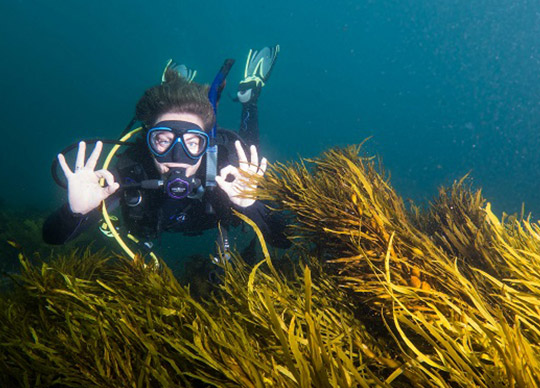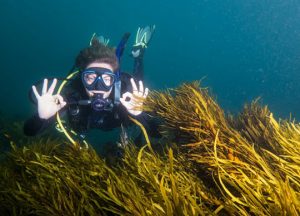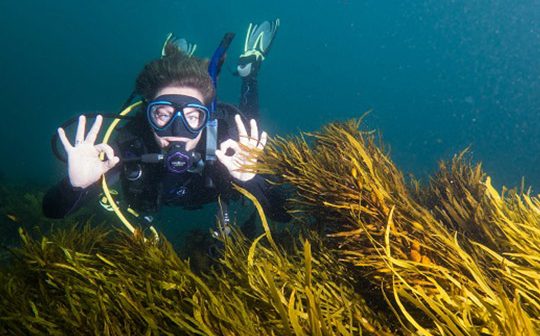

Image: George Wood.
A new research project at Flinders University aims to explore and develop lucrative industrial-scale seaweed production, expected to create hundreds of jobs in regional Australia in future years.
The restoration of seaweed forests for aquaculture, a more healthy marine environment and carbon storage are the themes of the new Australian Research Council project.
With funding from a $467,577 ARC Early Career Industry Fellowship, WA marine biologist Dr Georgina (‘George’) Wood will expand her work in the ecology, restoration and genomics of Australian seaweeds based at Flinders University, in partnership with primary industry departments of SA and NSW.
The project will set out to map and sample golden kelp and other seaweeds along the southeastern coastline and combine genomics, artificial intelligence and experimental ecology to develop guidelines and technologies that maximise the growth and resilience of key seaweed species for aquaculture.
This will benefit government, aquaculture and ecosystem management by improving design, assessment and implementation options for sustainable and productive use of Australian seaweeds, Dr Wood says.
Her research with the University of Western Australia’s Oceans Institute includes contributing to pioneering work progressing the ‘green gravel’ technique in providing scalable, practical solutions to restore and ‘future-proof’ kelp forests.
The ARC-funded project, led by Professor Thomas Wernberg, involves regeneration of ‘blue forests’ in golden kelp (Ecklonia radiata) reefs in WA – some of them degraded by human activity, heatwaves and climate change.
Dr Wood has also worked on seaweed genomics and ecology in NSW, including designing a restoration program for a locally exinct seaweed.
Around the world, seaweed cultivation is rapidly expanding for commercial production of food, pharmaceuticals, materials, agriculture supplements and ecosystem restoration.
In Australia, it’s forecast seaweed production could become a $1.5 billion industry with 9000 jobs by 2040 – while contributing up to 10% of Australia’s emission reduction goals.
Achieving this relies on the establishment of seedstock for hatcheries from wild seaweeds, and significantly expanding ocean-based seaweed farms.






